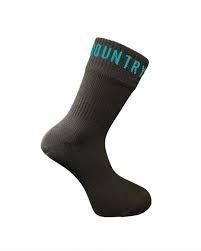Inquire
Waterproof Socks Market Forecast Analyzing Seasonal Trends, Product Innovation, And Consumer Demand Patterns

The Waterproof Socks Market is forecasted to grow significantly, driven by seasonal demand patterns, product innovation, and evolving consumer preferences. Consumers increasingly participate in trekking, hiking, running, adventure tourism, and professional outdoor work, seeking socks that provide waterproofing, breathability, thermal regulation, comfort, and durability. Manufacturers are leveraging technological innovation, multi-layer fabrics, ergonomic designs, and activity-specific solutions to meet these demands. Understanding seasonal trends, consumer expectations, and emerging innovations enables brands to optimize product offerings, strengthen market adoption, and achieve sustained growth globally.
Market Overview
The global waterproof socks market continues to expand as consumers demand socks that protect against water, manage moisture, regulate temperature, and provide ergonomic comfort. Seasonal trends influence purchase patterns, with demand peaking during colder months, monsoon seasons, and outdoor activity periods. Product innovation, such as waterproof membranes, thermal fabrics, and moisture-wicking materials, enhances appeal. Consumer behavior, climate adaptation, and activity-specific preferences drive market growth. Manufacturers addressing these factors, while offering regionally tailored solutions, capture adoption and maintain competitiveness in the global waterproof socks industry.
Seasonal Trends Impacting Demand
Seasonal variations significantly affect demand for waterproof socks. Cold and wet seasons increase the need for thermal insulation, waterproofing, and moisture management. Adventure tourists, hikers, trekkers, and outdoor sports enthusiasts plan activities according to climate conditions, driving seasonal purchases. Spring and summer trekking or running require lightweight, breathable socks, while autumn and winter outdoor activities prioritize thermal protection and waterproof membranes. Manufacturers aligning production schedules, inventory management, and marketing campaigns with seasonal trends optimize sales, meet consumer expectations, and maintain a consistent market presence.
Product Innovation as a Growth Driver
Product innovation is central to market expansion. Advances in material science, such as multi-layer waterproof membranes, breathable synthetics, thermal insulation blends, and anti-microbial treatments, enhance performance. Ergonomic designs with seamless construction, reinforced high-stress zones, cushioned areas, and activity-specific features improve comfort and durability. Activity-focused innovations, such as high-calf socks for trekking or lightweight trail socks for running, address specific consumer needs. Manufacturers integrating cutting-edge technologies and design improvements differentiate their products, attract targeted consumers, and strengthen global adoption.
Consumer Demand Patterns
Consumer demand patterns are shaped by activity type, climate, and lifestyle preferences. Outdoor enthusiasts seek socks offering waterproofing, breathability, thermal regulation, and ergonomic comfort. Professional users prioritize durability, protection, and performance for prolonged exposure to challenging environments. Seasonal purchases are influenced by outdoor event planning, tourism peaks, and climatic changes. Online reviews, social media content, and e-commerce platforms influence consumer decisions, driving awareness and purchase intent. Understanding these demand patterns enables manufacturers to forecast production, optimize distribution, and develop marketing strategies tailored to consumer behavior.
Regional Insights
Adoption of waterproof socks varies regionally based on climate, outdoor activity participation, and consumer awareness. Developed regions such as North America and Europe exhibit high seasonal demand for premium, high-performance socks due to adventure tourism, trekking, hiking, and professional outdoor work. Emerging markets in Asia-Pacific, Latin America, and the Middle East are witnessing increasing adoption as awareness grows through online platforms, social media, and outdoor community engagement. Regional adaptation in design, material selection, and marketing ensures alignment with consumer expectations and activity-specific requirements, maximizing seasonal sales potential.
Distribution Channels
Distribution channels play a crucial role in aligning with seasonal trends and demand patterns. Retail stores allow consumers to evaluate quality, fit, and performance, increasing trust and purchase confidence. E-commerce platforms provide convenience, accessibility, and detailed product information, enabling timely purchases aligned with seasonal demand. Integrated online-to-offline campaigns, seasonal promotions, and targeted marketing enhance visibility and engagement. Collaboration with specialty stores, outdoor apparel retailers, and sports outlets strengthens reach. Efficient multi-channel distribution ensures that consumers access waterproof socks when demand peaks, supporting market growth.
Challenges and Market Considerations
Challenges affecting the market include seasonal demand fluctuations, price sensitivity, climate variability, and competition from low-cost alternatives. Maintaining sufficient inventory to meet seasonal peaks without oversupply requires strategic planning. Consumer education on product benefits, performance features, and activity-specific advantages is essential to drive adoption. Manufacturers must address regional climatic differences and consumer preferences through tailored solutions. Strategic approaches combining innovation, marketing, and supply chain optimization help overcome these challenges, ensuring sustained market relevance and growth.
Future Market Outlook
The waterproof socks market is poised for continuous growth as seasonal trends, product innovation, and consumer demand patterns evolve globally. Manufacturers focusing on multi-functional fabrics, ergonomic design, activity-specific solutions, and climate-adapted products will capture emerging opportunities. Regional adaptation, seasonal forecasting, and integrated distribution strategies will enhance relevance and accessibility. By anticipating consumer demand, leveraging technological advancements, and aligning product offerings with seasonal needs, brands can strengthen market presence, drive adoption, and achieve long-term sustainable growth in the competitive global waterproof socks market.
Conclusion
In conclusion, seasonal trends, product innovation, and consumer demand patterns are shaping the future of the global waterproof socks market. Consumers increasingly seek socks that offer waterproofing, breathability, comfort, durability, and activity-specific features. Manufacturers aligning innovation, design, regional adaptation, and distribution strategies with seasonal demand maximize adoption, enhance consumer satisfaction, and sustain growth. By addressing these factors strategically, brands can capture emerging opportunities, strengthen competitive positioning, and maintain long-term success in the global waterproof socks industry.
- Managerial Effectiveness!
- Future and Predictions
- Motivatinal / Inspiring
- Outro
- Entrepreneurship
- Mentoring & Guidance
- Marketing
- Networking
- HR & Recruiting
- Literature
- Shopping
- Career Management & Advancement


 SkillClick
SkillClick